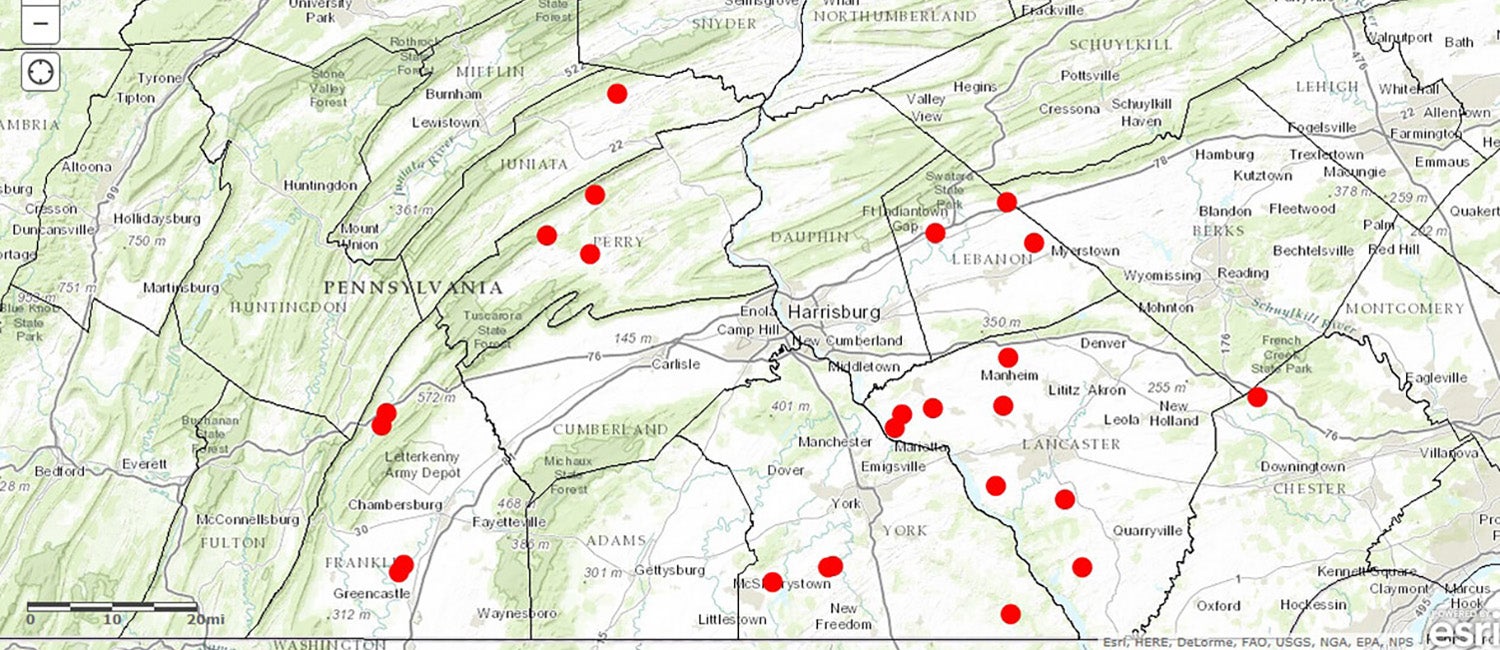Pennsylvania Regional Control Program
Swine Disease Control & Management
Run by Penn Vet’s Meghann Pierdon and funded by the Pennsylvania Pork Producers Council, the Pennsylvania Regional Control Program utilizes state-of-the-art geospatial information systems (GIS) to pinpoint current and emerging disease hotspots, share information about outbreaks with producers, and strategize community approaches to control potentially devastating diseases. In 2012, nearly a quarter of the swine monitored by Penn Vet’s efforts were on farms testing positive for disease. Since participating in the Pennsylvania Regional Control Program, that number has declined to 15 percent; 17 percent if Ohio and Indiana are included.
Penn Vet’s disease surveillance and response efforts have routinely been instrumental in helping Pennsylvania producers understand the scope and impact of both new and known diseases, while simultaneously assisting in improving and implementing the best biosecurity measures to stop the spread of deadly viruses.
Outreach Activities

Through the Pennsylvania Regional Control Program’s surveillance efforts, Penn Vet’s disease control and management experts are available to directly assist farmers and agricultural producers in the event of a disease outbreak in a herd or flock at any scale.
By conducting thorough on-farm visits, Penn Vet’s herd health experts work with producers to troubleshoot specific animal health concerns and develop comprehensive response and mitigation plans specific to each farm or industry.
In the event of large-scale industry disease outbreak concerns, Penn Vet experts also serve as liaisons between agricultural producers and regulatory response agencies in order to assure a safe and secure food supply.
Research
In addition to implementing industry-wide disease management strategies, Meghann Pierdon’s research efforts focus on advancing swine welfare practices — specifically in the areas of group housing, sow lameness, sow gestation, and pain mitigation — and harnessing GIS technologies to improve on-farm biosecurity and animal health.
